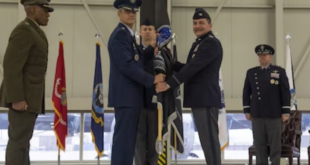
By Raphael Roettgen
50 years after humans first landed on the Moon, the space sector seems to be at an inflection point. Here is why: those land and sea landings of SpaceX’s Falcon-9 boosters (first stage rockets) surely never get old to watch, but, importantly, they also mean that a piece of equipment costing tens of millions of Dollars is not thrown away, but can be reused (in its latest version) up to 10 times according to the company, probably dropping its effective cost per launch to a few million Dollars.
This is surely a good part of the reason that SpaceX can offer a Falcon-9 launch for between $50-60 million, translating into a cost, to the customer, of around US$3000 or less per kilogram flown to low Earth orbit (LEO), which compares to often US$8000+ for incumbent competitors (excluding the Russian Proton rocket), while likely still enjoying a respectable gross margin.
As is widely known by now, post the Boca Chica presentation a few months ago, SpaceX is currently developing its next generation Starship vehicle, whose ultimate destiny is to carry up to 100 humans to Mars. However, it can also be used for transport to Earth orbit and the Moon. Elon Musk has indicated that it may have a realistic capacity of approx. 100 metric tons to LEO, (multiple times the payload capacity of the Falcon-9, the company’s current workhorse), while being fully reusable. With vehicles like Starship, the price per kilogram to LEO may drop to something like a few hundred Dollars, even assuming the company does not proactively cut its gross margin. All in all, the drop in average launch cost in the near future vs. recent history may hence well exceed 90%.
This is significant. Industries do not stay the same when their cost drops by an order of magnitude – think e.g. about the internet dropping the cost of accessing consumers’ eyeballs. For a comparison more directly related to transportation (which is what space launches are in the end), we can look back approximately 150 years to the time when railroads were built out to the U.S. West. The railroads allowed far higher passenger and cargo volumes than the previous mode of transportation – stagecoaches – and dropped the cost of reaching the U.S. West by an estimated 85%. The effects were dramatic. California’s population increased from 92597 (first census, in 1850) to 1.485 million in 1900. The real GDP of the United States increased 8.5x over the same timeframe. Transportation stocks exploded to represent up to 60% of the total stock market capitalization in the U.S. The dramatically lower cost of accessing the U.S. West made this possible, by enabling e.g. large-scale settlement and agriculture.
On the face of it, there is no reason why the equally dramatic drop in the cost of accessing space should not have a similar effect, especially once one takes into account that, in parallel to the drop in launch costs, satellite components are also experiencing ongoing cost decreases and are becoming smaller – meaning that it is not only getting much cheaper to get a kilogram to orbit, but that one can also pack ever more ‘value’ in that kilogram. At the heart, the much lower costs mean that a whole set of business models that were previously economically infeasible may soon be feasible – ranging from the proposed broadband satellite constellations (by e.g. SpaceX’s Starlink, OneWeb, and Amazon’s Kuiper) over space tourism all the way to (currently) more exotic applications such as resource mining on the Moon and other celestial bodies. Importantly, the examples in the previous sentence are Space business models that are already known. The real question is what creative entrepreneurs can come up with, exploiting this much cheaper cost of accessing space. This parallels the internet in the mid-1990s, when people could easily imagine e.g. email, news readers, some basic e-commerce, but nobody foresaw things like e.g. Facebook, Airbnb, Uber, Tinder, etc.
Coming back to the U.S. West one more time, Richard White wrote in his book Railroaded: “if a Western Rip Van Winkle had fallen asleep in 1869 and awakened in 1896, he would not have recognized the lands that the railroads had touched. Bison had yielded to cattle; mountains had been blasted and bored. Great swaths of land that had once whispered grass now screamed corn and wheat (…) Population had increased across much of this vast region, and there were growing cities along its edges (…) Each change could have been traced back to the railroads.”
California went from a barren land to the world’s #5 economy. The Moon and Mars are barren today. The question is what they may look like in, say, 50 years’ time? Will the decreasing cost of space, coupled with a set of motivated, pioneering entrepreneurs, have a similar effect?

Raphael Roettgen provides financial advice to and invests proprietary capital in space companies as a managing director and founder of E2MC. He also advises institutional investors and governments on space. Previously, Raphael has held senior roles at global investment banks and hedge funds and was also a fintech entrepreneur in Brazil. He holds degrees in finance from Wharton, machine learning from PUC-Rio and space studies from the International Space University, as well as the CFA and FRM charters.
 SpaceWatch.Global An independent perspective on space
SpaceWatch.Global An independent perspective on space




